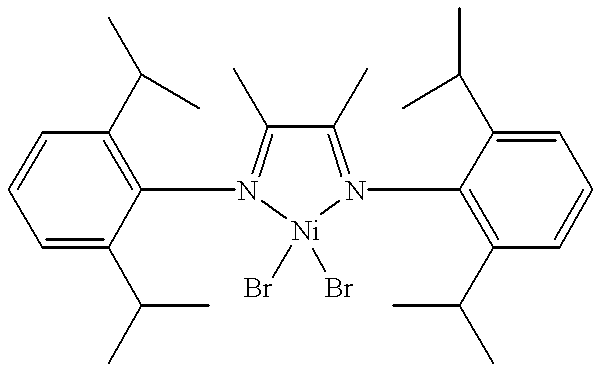Ionomers and ionically conductive compositions
a technology of ionomers and compositions, applied in the field of ionomers and ionically conductive compositions, can solve the problems of reduced ionic mobility and consequent conductivity loss, and high cost of fluorinated monomers
- Summary
- Abstract
- Description
- Claims
- Application Information
AI Technical Summary
Benefits of technology
Problems solved by technology
Method used
Image
Examples
examples 1-22
Each of the film samples F1-F16, F19, F21-F23 described in Table 3, plus two oil aliquots of polymer XI, were hydrolyzed by treatment with a saturated solution of LiOH in 1:1 water methanol, followed by a soak in 1:1 water methanol, and then heating in a fresh 1:1 water / methanol mixture. Specimens were then dried, except where otherwise specified in a Model 1430 vacuum oven available from VWR Scientific, West Chester, Pa., at a vacuum of at a pressure of ca. 220 torr. Table 4 provides the duration and temperature of film exposure to the LiOH solution, the duration of the room temperature rinse, the temperature and duration of the warm rinse, and the temperature and duration of drying of the hydrolyzed film.
example 23
A 4.43 g sample of Polymer XIV in the form of as-polymerized polymer crumb formed as described in Example XIV, was subject to hydrolysis by immersing for two hours into an excess of a saturated solution of LiOH in a 1:1 water / methanol mixture preheated to 70.degree. C., followed by heating to 75.degree. C. and holding for an additional two hours, followed in turn by cooling to room temperature and holding for 12 hours, and followed by heating to 75.degree. C. again, and holding for 4 hours. The resulting hydrolyzed polymer was then subject to a 12 hour rinse at room temperature in a 1:1 mixture of water / methanol, followed by a 4 hour rinse at 80.degree. C. in a fresh mixture of 1:1 water / methanol followed by a 12 hour rinse at room temperature in a 1:1 mixture of water / methanol.
The hydrolyzed polymer was then dissolved in THF and cast into a film by casting onto a glass plate, followed by evaporation of the THF, and separation of the film from the plate. The hydolyzed film so formed...
example 24
0.2817 g of lithiated polymer sample S19 prepared as hereinabove described was placed in 10 mL of THF and warmed gently until dissolved. 0.056 g of Cabot Cab-o-sil.RTM. TS530 was added and stirred until dispersed. The dispersion was cast into a round petri dish of Teflon.RTM. PFA, 50 mm in diameter, and the solvent was allowed to evaporate to form the hydrolyzed film designated hereinbelow as specimen S24.
PUM
| Property | Measurement | Unit |
|---|---|---|
| weight ratio | aaaaa | aaaaa |
| weight ratio | aaaaa | aaaaa |
| weight ratio | aaaaa | aaaaa |
Abstract
Description
Claims
Application Information
 Login to View More
Login to View More - R&D
- Intellectual Property
- Life Sciences
- Materials
- Tech Scout
- Unparalleled Data Quality
- Higher Quality Content
- 60% Fewer Hallucinations
Browse by: Latest US Patents, China's latest patents, Technical Efficacy Thesaurus, Application Domain, Technology Topic, Popular Technical Reports.
© 2025 PatSnap. All rights reserved.Legal|Privacy policy|Modern Slavery Act Transparency Statement|Sitemap|About US| Contact US: help@patsnap.com



